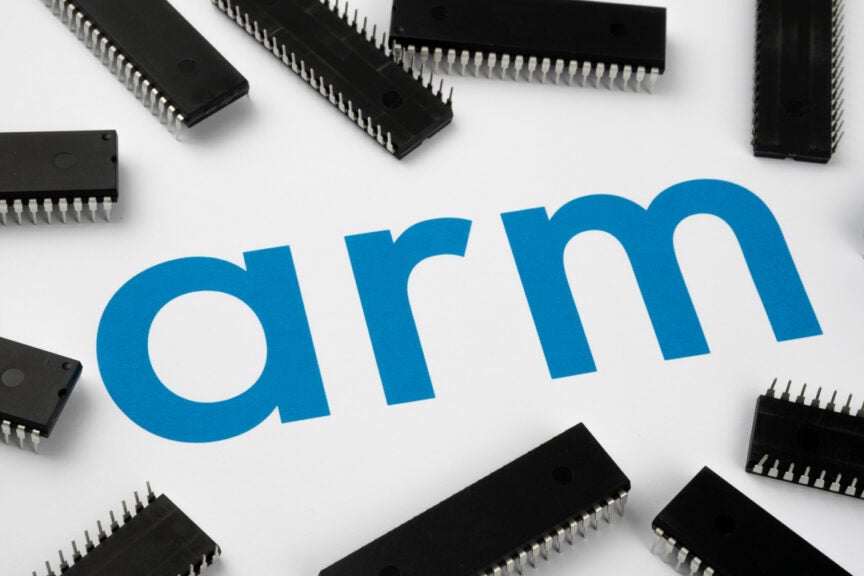Arm’s Ambitious Move: A Potential Challenge to Nvidia’s Chip Dominance
In a rapidly evolving technological landscape, the semiconductor industry finds itself at a crossroads, with major players jockeying for position. Recently, SoftBank-owned Arm has made headlines with its reported interest in acquiring Oracle-backed Ampere Computing. This ambitious move could not only reshape Arm’s future but also pose a significant challenge to Nvidia’s longstanding dominance in the graphics processing unit (GPU) market. As we delve deeper into this potential acquisition, we’ll explore what it means for Arm, Ampere, and the broader semiconductor ecosystem.
The Current Landscape of the Semiconductor Industry
The semiconductor industry has witnessed explosive growth over the past decade, driven by advancements in artificial intelligence (AI), cloud computing, and the Internet of Things (IoT). At the forefront of this growth has been Nvidia, whose GPUs have become indispensable in AI applications, gaming, and data centers. With a market capitalization that often eclipses its competitors, Nvidia has established itself as the gold standard in chip technology.
However, the landscape is not static. Companies like AMD, Intel, and particularly Arm are increasingly stepping up their game. Arm’s architecture, known for its energy efficiency and performance, has gained traction in mobile devices and embedded systems. By eyeing an acquisition of Ampere Computing, Arm could enhance its portfolio and strategically position itself to challenge Nvidia’s supremacy.
What Ampere Computing Brings to the Table
Ampere Computing specializes in designing high-performance processors specifically for cloud computing. Their chips are optimized for data centers, which are crucial for modern applications that require massive computational power. By integrating Ampere’s technology and expertise, Arm could significantly bolster its offerings in the data center segment, an area where Nvidia has made substantial inroads.
- Performance: Ampere’s processors are built on Arm’s architecture, which means they can leverage existing Arm software ecosystems, providing a smoother transition and faster integration.
- Scalability: Ampere’s cloud-centric designs facilitate scalability, catering to the ever-growing demands of cloud service providers.
- Cost Efficiency: Their focus on energy efficiency aligns with the increasing demand for sustainable solutions in data centers, making them a compelling choice for businesses aiming to reduce their carbon footprint.
Implications of Arm’s Acquisition Efforts
If Arm successfully acquires Ampere Computing, the implications could be monumental:
- Enhanced Product Line: Arm would be able to offer a more comprehensive suite of products that compete directly with Nvidia’s GPUs and other processors.
- Market Diversification: This acquisition could help Arm diversify its revenue streams beyond mobile and embedded solutions, tapping into the lucrative data center market.
- Strengthened Competitive Position: A stronger Arm could lead to increased competition in the semiconductor industry, potentially lowering prices and fostering innovation.
Challenges Ahead for Arm
Despite the exciting prospects, Arm’s ambitious move is not without challenges. The semiconductor industry is notoriously competitive, with entrenched players like Nvidia and Intel maintaining significant market share. Here are some hurdles Arm may face:
- Integration Complexity: Merging two companies requires careful planning and execution. Arm will need to integrate Ampere’s technology and talent without disrupting existing operations.
- Market Perception: Nvidia and Intel have long been seen as leaders. Arm must work hard to shift market perception and convince customers of the value of its new offerings.
- Innovation Pressure: With greater market presence comes heightened expectations. Arm will need to consistently innovate to maintain its competitive edge.
The Future of Arm and the Semiconductor Landscape
Looking ahead, Arm’s potential acquisition of Ampere Computing could signify a broader shift in the semiconductor landscape. As companies increasingly pivot towards AI and cloud computing, the demand for powerful, efficient processors is only expected to grow. Arm’s strategy to bolster its capabilities in this arena could pay off handsomely.
Moreover, this acquisition could spur a wave of consolidation within the industry. Other companies may feel pressure to either merge or innovate aggressively to keep pace with a stronger Arm. This could lead to an environment ripe for technological breakthroughs and new market entrants, ultimately benefiting consumers and businesses alike.
Conclusion: A New Era for Arm?
Arm’s ambitious move to acquire Ampere Computing could indeed challenge Nvidia’s chip dominance and reshape the semiconductor industry. As Arm seeks to expand its influence in the data center market, the implications of this acquisition extend beyond mere market share. It represents a strategic realignment in which energy efficiency, performance, and innovation are paramount.
For industry watchers, this development is a signal of the shifting tides in technology. Arm has the opportunity to redefine itself and its competitive landscape, but the path forward will require deft maneuvering amidst fierce competition. The semiconductor industry, always in flux, may soon witness a new player rise to prominence—ushering in an era where Arm can stand shoulder to shoulder with giants like Nvidia.
In a world where technological advancements are the lifeblood of progress, Arm’s calculated steps could mark the beginning of a thrilling chapter in semiconductor history. Only time will tell if this ambition translates into tangible success, but the potential is undeniably exciting.
See more Future Tech Daily

